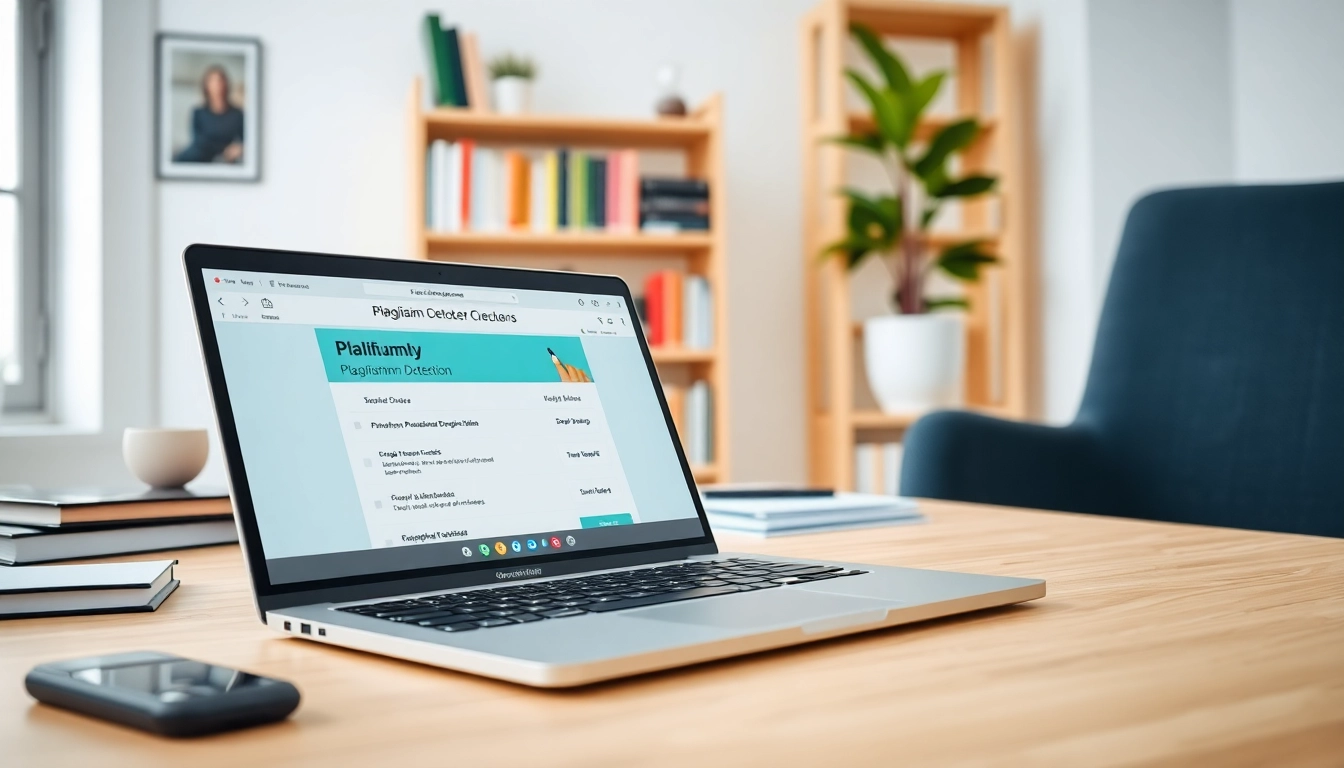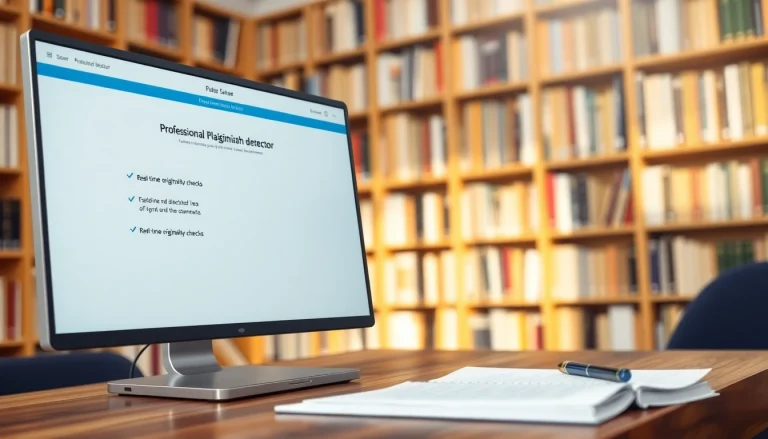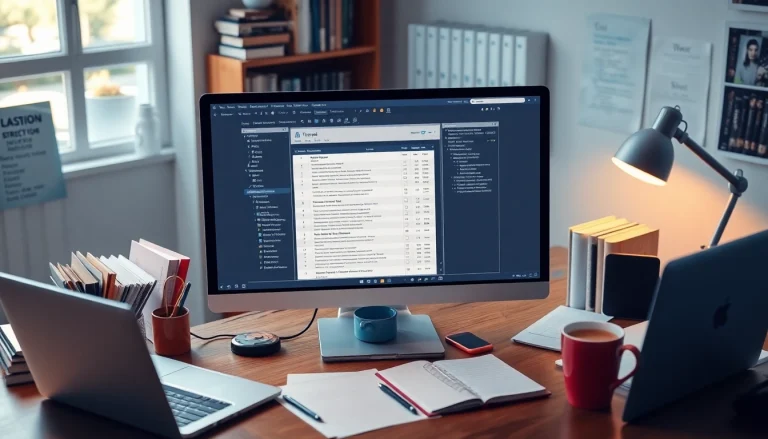Understanding the Importance of a Plagiarism Checker
In the digital age, content creation has become more accessible than ever before. With just a few clicks, anyone can generate articles, essays, and reports. However, this ease also brings about challenges, one of which is maintaining the originality of content. A plagiarism checker is an essential tool for ensuring that written work is both genuine and credible. This article aims to delve into the significance of plagiarism checkers, how they function, what features to consider when selecting the right one, best practices for usage, and emerging trends in this field.
What is a Plagiarism Checker?
A plagiarism checker is a digital tool designed to analyze written content and identify instances of plagiarism—where content has been copied or closely paraphrased from existing sources without proper attribution. These tools compare the submitted text against a vast database of academic papers, articles, websites, and other written content, highlighting sections that are not original. The main objective of using a plagiarism checker is to ensure the integrity of one’s work and respect intellectual property rights.
Why Plagiarism Detection Matters in Academia
In academic settings, the consequences of plagiarism can be severe. Assignments and research papers are often evaluated not only for their content quality but also for their originality. Institutions with strict academic integrity policies may impose sanctions ranging from a failing grade to expulsion for students found guilty of plagiarism. In this context, plagiarism checkers serve as a safeguard, enabling students and educators to uphold ethical standards in scholarly work. Furthermore, the pressure to produce original research has increased, emphasizing the need for tools that can assist in maintaining high academic standards.
Common Misconceptions About Plagiarism
Misunderstandings about plagiarism abound, which can lead to unintentional infringement of others’ work. One common myth is that plagiarism only involves copying text verbatim. In reality, plagiarism also includes paraphrasing someone else’s ideas without acknowledgment and using images, graphs, or data without permission. Another misconception is that self-plagiarism is acceptable; however, reusing one’s previously published work without citation can also be problematic, especially in academic circles. Understanding these nuances is critical in fostering an honest writing community.
How a Plagiarism Checker Works
Basic Functionality of a Plagiarism Checker
Most plagiarism checkers operate through a straightforward process. First, the user submits the text they wish to analyze. The software then scans the content against its database of existing materials, which may include academic journals, articles, websites, and other accessible documents. The results are typically presented in a report that highlights the specific sections of text that match existing sources, along with a link to the original content when available. This allows users to assess potential issues and revise their work accordingly.
The Role of Algorithms in Detection
The technology behind plagiarism checkers relies on sophisticated algorithms that can recognize similarities in sentence structure, phrasing, and overall content. Advanced systems utilize machine learning and artificial intelligence to enhance their detection capabilities. By continuously updating their databases and improving their algorithms, these tools can identify even subtle forms of plagiarism, including synonyms or restructured sentences. This technological progress significantly enhances the accuracy and reliability of modern plagiarism checkers.
Types of Content Analyzed
Plagiarism checkers can review a variety of content types, including academic papers, essays, articles, websites, reports, and creative writing. Some advanced tools even offer the ability to analyze multimedia content, such as images and videos, for copyright violations. The flexibility in the types of content analyzed makes plagiarism checkers valuable not only in academic settings but also in professional and creative industries where originality is paramount.
Choosing the Right Plagiarism Checker
Key Features to Look For
When selecting a plagiarism checker, users should consider several key features. One of the most important is the size and comprehensiveness of the database the tool uses for comparison. A larger database increases the likelihood of detecting instances of plagiarism. Additionally, users should look for tools that provide detailed reports, showing not only the matches but also the sources of those matches. Other features to consider include user-friendly interfaces, grammar checking capabilities, and the ability to check citations for accuracy.
Comparing Free vs. Paid Plagiarism Checkers
Many free plagiarism checkers are available online, but they often come with limitations. These may include smaller databases, fewer features, and less accurate detection. Paid versions, on the other hand, typically offer more comprehensive services, including greater database access, advanced detection algorithms, and added functionalities such as grammar checks and writing suggestions. Users must evaluate their needs against the costs to determine the best option for them.
Evaluating Accuracy and Reliability
The accuracy and reliability of a plagiarism checker are vital for users seeking to ensure their work’s originality. To evaluate this, users can look for reviews, testimonials, and trial options provided by the tools. Additionally, comparing results from multiple checkers on the same text can provide insights into their effectiveness and help identify which tool offers the most reliable service.
Best Practices for Using a Plagiarism Checker
Integrating Plagiarism Checks in Your Workflow
Integrating a plagiarism checker into your writing process can streamline the creation of original content. It is advisable to run a plagiarism check at various points during the writing process: after drafting, before submitting for peer review, and before final submission. This approach not only helps catch potential issues early but also fosters a habit of checking that can enhance overall writing quality.
Interpreting the Results of a Plagiarism Checker
Understanding the results produced by a plagiarism checker is crucial for effective use. Users should carefully review the highlighted sections and examine the sources linked in the report. Not all matches indicate wrongdoing; some may involve common phrases or properly cited quotations. Distinguishing between acceptable and unacceptable overlaps is key to making informed revisions.
How to Make Revisions Based on Feedback
Once the plagiarism check results have been reviewed, users should take actionable steps to revise their work. This might involve rewriting sections to enhance originality or ensuring proper citations for borrowed ideas. Furthermore, users can integrate feedback into their writing process to build stronger, more original content in the future, reducing the need for extensive revisions later.
Future Trends in Plagiarism Detection
Advancements in AI Technology for Plagiarism Checkers
The future of plagiarism detection is becoming increasingly intertwined with advancements in artificial intelligence. Emerging technologies in machine learning are enhancing the ability of plagiarism checkers to recognize not just verbatim copying but more complex forms of plagiarism that involve ideas and structures. Such innovations promise to make detection more nuanced and effective, assisting users in maintaining high standards of originality.
The Growing Need for Originality in Digital Content
As digital content continues to proliferate, the demand for originality becomes more pronounced. Businesses, educators, and content creators are increasingly emphasizing the importance of authentic content. This trend underlines the value of plagiarism checkers not only in academia but also in professional contexts such as marketing and journalism, where plagiarism can lead to legal consequences and reputational damage.
Potential Challenges and Ethical Considerations
Despite advancements, the use of plagiarism checkers does raise ethical questions. For instance, there is a delicate balance between protecting intellectual property and encouraging free expression of ideas. Moreover, reliance on technology for checking originality could potentially undermine personal judgment and intuition in content creation. As the field evolves, it will be essential to address these challenges to maintain the integrity of both plagiarism detection technology and the writing process.








